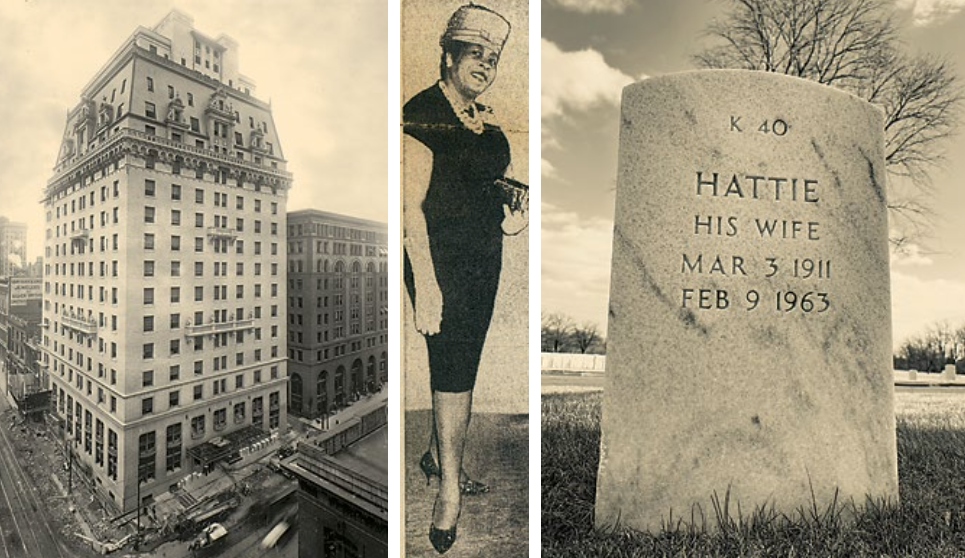History & Politics
Bob Dylan’s “Lonesome Death of Hattie Carroll” Became a Protest Song of the Civil Rights Era
Sixty years ago, a white Southern Maryland plantation owner struck and killed a Black Baltimore server at a society ball, galvanizing the city and making national headlines.

Fifty-one-year-old Hattie Carroll typically worked as a server and bartender at the Emerson Hotel during special functions such as the annual Spinsters’ Ball, a charity affair benefiting the Baltimore League for Crippled Children and Adults. (The gala’s name was intended as tongue-in-cheek, referring to debutantes who remained unmarried at 25.)
On Feb. 8, 1963, William “Billy” Zantzinger, a 24-year-old tobacco farm owner from southern Maryland, and his wife began their evening with a pre-ball dinner and cocktails at the swanky Eager House. The couple arrived elegantly dressed to the 10 p.m. gala. He wore a top hat, white tie and tails, and a carnation in his lapel, and carried a “toy” cane, which he’d picked up at a carnival. He was boisterous and rudely drunk, elbowing his way through the two-and-three deep crowd at the Emerson Hotel bar. According to the grand jury testimony of a waitress working alongside Hattie Carroll, he came in hollering, “I just flew in from Texas. Give me a drink!”
Zantzinger ordered a bourbon and ginger ale, returned, and demanded a second drink, then another. He banged his cane on the bar, repeatedly whacked a waitress on her backside, and generally abused the staff as he continued drinking, at one point falling on the dance floor with his wife, who was also intoxicated.
Sometime after midnight, the six-foot-two, 220-pound Zantzinger returned to the bar once again. He hurled racist slurs and ordered Carroll to fix him another drink. The church-going, married mother of 11, and grandmother of nine, replied, “Just a minute, sir,” which was not what Zantzinger was used to hearing on his 600-acre Charles County farm. He struck Carroll with a hard blow of his cane between her neck and shoulder. “Why are you so slow, you Black bitch?” he shouted.
She struggled to remain on her feet and leaned heavily against the female bartender next to her. Moments later, she told the woman and another co-worker, “I feel deathly ill, that man has upset me so.” They helped her to the kitchen, where her speech became garbled and her arm went numb. She collapsed.
Hattie Carroll was pronounced dead of a brain hemorrhage at 9:15 a.m. the following Saturday morning at Mercy Hospital. Her autopsy revealed hardened arteries and high blood pressure. The reaction to her death was bitter and swift in the Black community.
“I was so angry, I was ready to kill that man myself, that’s how visceral my response was,” recalls Avon Bellamy Sr., then a Morgan State student and later a city and state administrator, his voice rising at the memory. “She was doing what Black women did to get by—work as a domestic in white people’s homes, work in a hotel or a restaurant serving white people. She was as good a citizen as anyone could be. She could’ve been any of our aunts or mothers.”
At Gillis Memorial Church, where Carroll sung in the choir, the Afro-American estimated 1,600 mourners turned out for her Valentine’s Day memorial service.
Zantzinger was charged with homicide, but that was reduced to manslaughter when the defense argued her health was a mitigating factor. Carroll’s death and Zantzinger’s controversial trial, which was moved to Hagerstown, a friendlier jurisdiction for the defendant, became a flashpoint in Baltimore.
“It galvanized people, in terms of toppling the white power structure,” says Real News journalist Marc Steiner, a 17-year-old activist at the time.
Hattie Carroll’s death and Zantzinger’s trial also made national headlines. Bob Dylan, who had written “The Death of Emmett Till” in 1962, penned “Only a Pawn in Their Game” immediately after the murder of Mississippi civil rights activist Medgar Evers in the summer of 1963—a few months after Carroll’s death.
Reading about Carroll’s death during Zantzinger’s trial, the folk singer wrote “The Lonesome Death of Hattie Carroll,” which many critics believe to be among his very best songs. (Dylan seems to agree, he still performs it.) He took a few artistic liberties, including removing the “t” from Zantzinger, but Dylan referred to it as a “true story…taken out of the newspapers.”
William Zanzinger killed poor Hattie Carroll
With a cane that he twirled around his diamond ring finger
At a Baltimore hotel society gath’rin’
On Aug. 28, 1963, the same day Zantzinger was sentenced to just six months in jail—and granted a release to help with that fall’s harvest—Rev. Martin Luther King Jr. led 250,000 marchers to the nation’s capital in what The New York Times called “the greatest assembly for the redress of grievances that this capital has ever seen.” He gave his “I Have a Dream” speech that afternoon in front of the Lincoln Memorial.
“What I can’t believe, what befuddles me, is where we are today,” says Bellamy, highlighting the innocent deaths of Sandra Bland and Armaud Arbery, among others, as examples of ongoing racism. “When is it going to get better? I was 21 when Hattie Carroll was killed. I’m 81 now.”